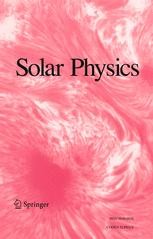Editors' Choice: "ICME Evolution in the Inner Heliosphere"
 Luhmann, J.G., Gopalswamy, N., Jian, L.K. et al. ICME Evolution in the Inner Heliosphere. Sol Phys 295, 61 (2020). https://doi.org/10.1007/s11207-020-01624-0
Luhmann, J.G., Gopalswamy, N., Jian, L.K. et al. ICME Evolution in the Inner Heliosphere. Sol Phys 295, 61 (2020). https://doi.org/10.1007/s11207-020-01624-0
Editor's Choice | Invited Review
Published: 23 April 2020
Abstract:
ICMEs (interplanetary coronal mass ejections), the heliospheric counterparts of what is observed with coronagraphs at the Sun as CMEs, have been the subject of intense interest since their close association with geomagnetic storms was established in the 1980s. These major interplanetary plasma and magnetic field transients, often preceded and accompanied by solar energetic particles (SEPs), interact with planetary magnetospheres, ionospheres, and upper atmospheres in now fairly well-understood ways, although their details and context affect their overall impacts. The term ICME as it is used here refers to the complete solar-wind plasma and field disturbance, including the leading shock (if present), the compressed, deflected solar-wind plasma and the field behind the shock (“sheath”), and the coronal ejecta (the “driver”) – often called a magnetic cloud. Many uncertainties remain in understanding both the relationship to what is observed at the Sun and the variety of local outcomes suggested by in-situ observations. This impacts our abilities to interpret events and to forecast effects based on solar observations. Here, we briefly consider what is known about ICMEs and their evolution en route from the Sun from the combination of available observations and interpretive models that have been developed up to now. The included references are only representative of the large body of work that has been published on this subject. Our aim is to provide the reader with an updated synthesis of research results in this still active area of heliophysics at the dawn of the Parker Solar Probe (PSP) and Solar Orbiter (SO) mission era.
Solar Physics Editor's Choice:
In each volume of Solar Physics, a few papers are marked as “Editors’ Choice”. The primary criteria is original, high quality research that is of wide interest within the community.
